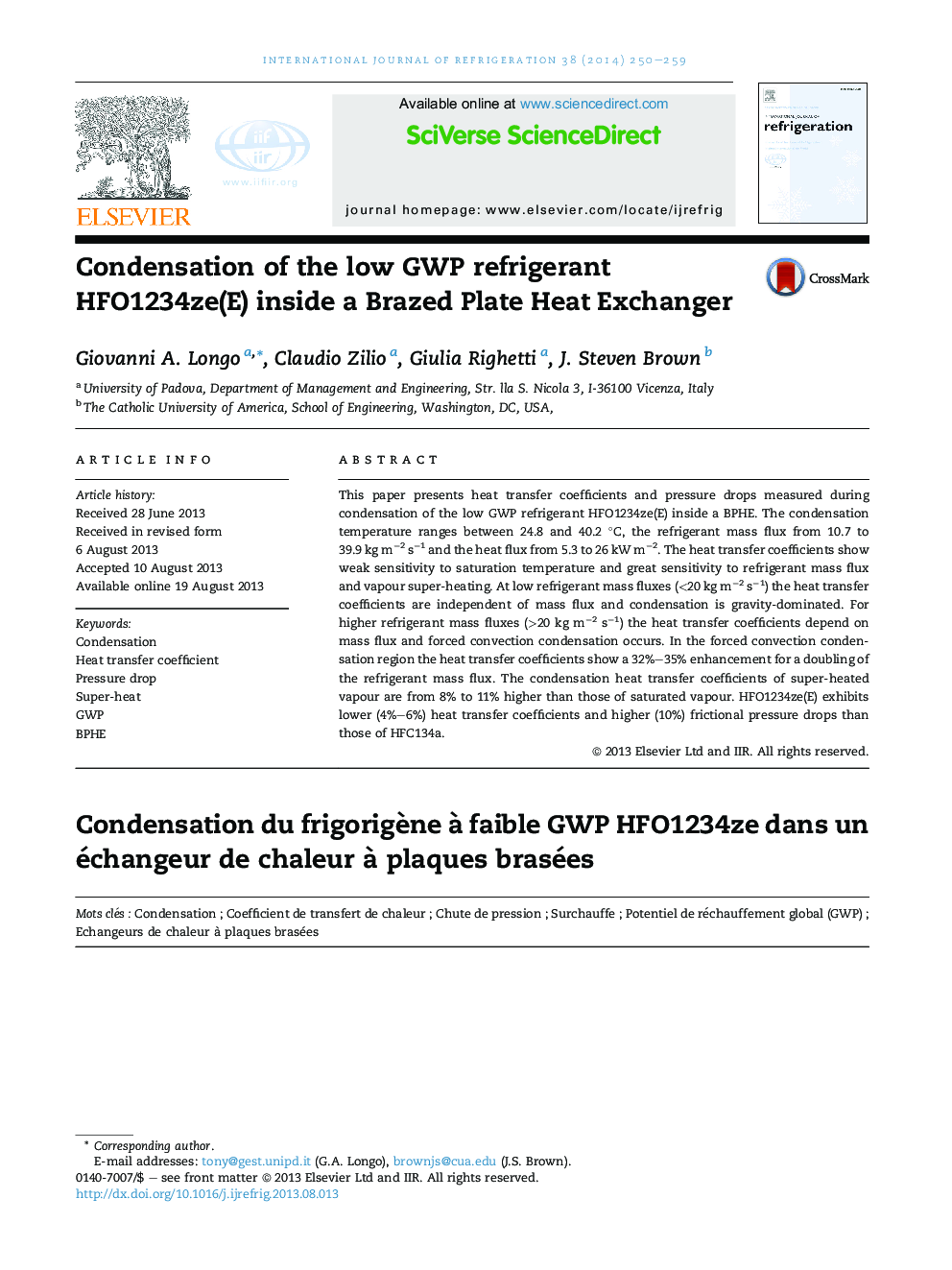| Article ID | Journal | Published Year | Pages | File Type |
|---|---|---|---|---|
| 790198 | International Journal of Refrigeration | 2014 | 10 Pages |
•This paper investigates HFO1234ze(E) condensation inside a BPHE.•The heat transfer coefficients show great sensitivity to mass flux and vapour super-heating.•A transition point between gravity controlled and forced convection condensation has been found.•The frictional pressure drop shows a linear dependence on the kinetic energy.•HFO1234ze(E) shows heat transfer performance lower than HFC134a and higher than HFO1234yf.
This paper presents heat transfer coefficients and pressure drops measured during condensation of the low GWP refrigerant HFO1234ze(E) inside a BPHE. The condensation temperature ranges between 24.8 and 40.2 °C, the refrigerant mass flux from 10.7 to 39.9 kg m−2 s−1 and the heat flux from 5.3 to 26 kW m−2. The heat transfer coefficients show weak sensitivity to saturation temperature and great sensitivity to refrigerant mass flux and vapour super-heating. At low refrigerant mass fluxes (<20 kg m−2 s−1) the heat transfer coefficients are independent of mass flux and condensation is gravity-dominated. For higher refrigerant mass fluxes (>20 kg m−2 s−1) the heat transfer coefficients depend on mass flux and forced convection condensation occurs. In the forced convection condensation region the heat transfer coefficients show a 32%–35% enhancement for a doubling of the refrigerant mass flux. The condensation heat transfer coefficients of super-heated vapour are from 8% to 11% higher than those of saturated vapour. HFO1234ze(E) exhibits lower (4%–6%) heat transfer coefficients and higher (10%) frictional pressure drops than those of HFC134a.
